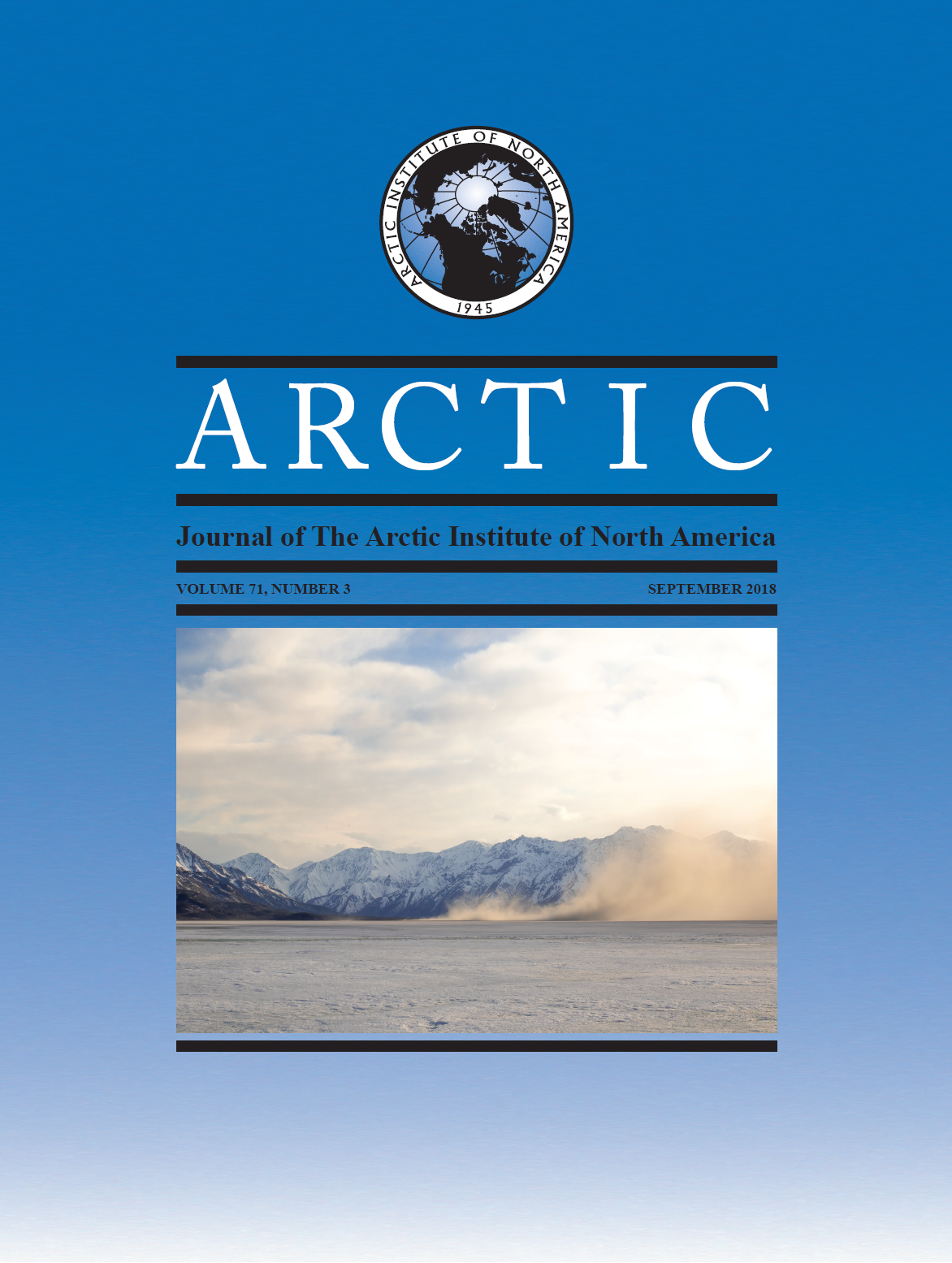Growing-Season Temperature Change across Four Decades in an Arctic Tundra Pond
DOI:
https://doi.org/10.14430/arctic4730Keywords:
tundra pond, climate change, Barrow, Alaska, Arctic, temperature, thaw, freeze, growing degree daysAbstract
We examined temperature dynamics across a 42-year period in a low-centered tundra polygon pond on the Arctic Coastal Plain of northern Alaska to assess potential changes in thermal dynamics for ponds of this type. Using water temperature data from a pond near Barrow (now Utqiaġvik), Alaska, studied intensively during 1971 – 73 and again in 2007 – 12, we built an empirical model coupling historical air temperatures to measured pond temperatures for four summers. We then used the model to predict summer pond temperatures over a 42-year span, including 1974 – 2008, for which direct aquatic temperature records do not exist. Average pond temperatures during the growing season (1 May through 31 October) increased by 0.5˚C decade-1 or 2.2˚C over the 42-year period. Our simulations predicted the average date of spring thaw for the pond as 2 June (± 3 d), which did not change over the 42-year time period. However, average pond temperature during the first 30 days of the growing season increased from 1971 to 2012, suggesting that recently, ponds are warmer in early spring. The average date of pond sediment freeze over the 42 years shifted later by 15 days, from 28 September in 1971 to 13 October in 2012. These changes correspond to a growing season that has increased in length by 14 days, from 118 days in 1971 to 132 days in 2012. Contemporary temperature measurements in other shallow tundra ponds in northern Alaska show a high degree of temporal coherence (r = 0.93 – 0.99), which warrants the general conclusion that tundra ponds on Alaska’s Arctic Coastal Plain have undergone a significant change in thermal dynamics over the past four decades. Our results provide a means to incorporate these pond types into larger-scale simulations of Arctic climate change.


